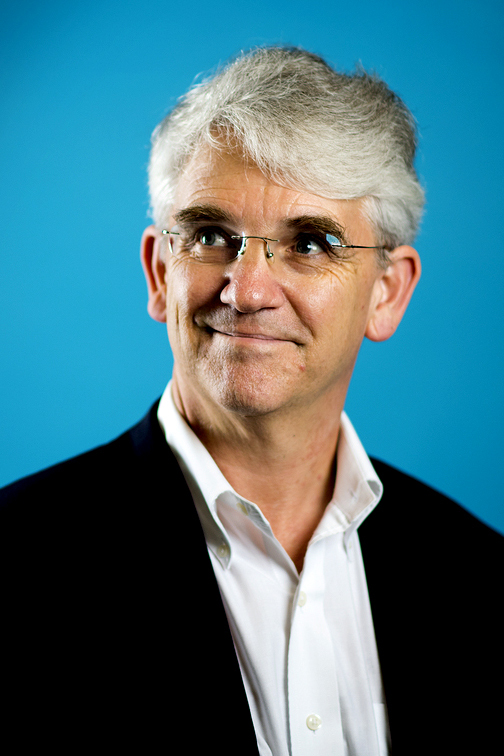The new fitness coach might not have a body

Despite the well-documented health benefits of something as simple as walking, most adults in the United States aren’t getting enough exercise. And the programs and tools we use to encourage ourselves are primarily marketed to, and used by, white, English-speaking populations.

Timothy Bickmore, a professor of computer sciences at Northeastern, has been working for the past 15 years on creating virtual coaches to help counsel people on health-related behavior. Photo by Matthew Modoono/Northeastern University
That’s where Carmen fits in. She’s a fitness coach who speaks English and Spanish, wants to hear about your favorite TV shows or sports teams, and is ready to help you reach your goals. She is also entirely digital.
Timothy Bickmore, a professor of computer sciences at Northeastern, has been working for the past 15 years on creating virtual coaches to help counsel people on health-related behavior. He built Carmen with his collaborators as a fitness coach for older Latino populations. In a year-long study recently published in the Journal of the American Medical Association, the researchers demonstrated that she can be as effective as a trained, human fitness advisor from the community.
“Both the human and the virtual coach led to significant increases in walking over the course of the year,” says Bickmore, who is also an associate dean for research. “We did just as well—actually a little bit better, but not significantly better—than the human at the end of the year.”
The researchers recruited 245 Latino participants in the San Francisco Bay Area between the ages of 50 and 87, all of whom had reported that they were not active enough. At nearby community centers, half the participants met with a peer advisor trained in fitness coaching and half met with Carmen.
These one-on-one sessions were brief, taking only 10 to 15 minutes. Participants would chat with the advisor, share data from the pedometer they had been given, and discuss their progress and how to achieve their goals. The only difference was that half of them were speaking with a person, and half were talking to a computer screen.
Carmen appears on the screen as a digitized woman standing in a living room. She asks participants about their day and makes other chit-chat, building up a rapport with participants. She also encourages participants to talk about problems they’re having and to negotiate goals.
Bickmore, who created the algorithm that guides these interactions, wasn’t surprised to find Carmen performed as well as the human coaches.
“The virtual agents have a lot of things going for them,” Bickmore says. “We design them with the best practices in counseling. They don’t have bad days. People just learned to trust the virtual coach and follow its advice.”
By the end of the study, participants interacting with Carmen had, on average, increased the amount of time they spent walking each week by 154 minutes. (Participants working with a human coach increased their weekly walking by 132 minutes.) The researchers also found that participants had significant reductions in blood pressure, resting heart rate, and body-mass index.
“Exercise is one of the universal health behaviors that everybody can benefit from, and particularly the older adult population,” Bickmore says. “Older adults perhaps have lower computer literacy, less experience with computers in general, but we find that when we present them with something that looks and feels like a face-to-face conversation, that it’s much easier for them to use.”
For media inquiries, please contact Shannon Nargi at s.nargi@northeastern.edu or 617-373-5718.





